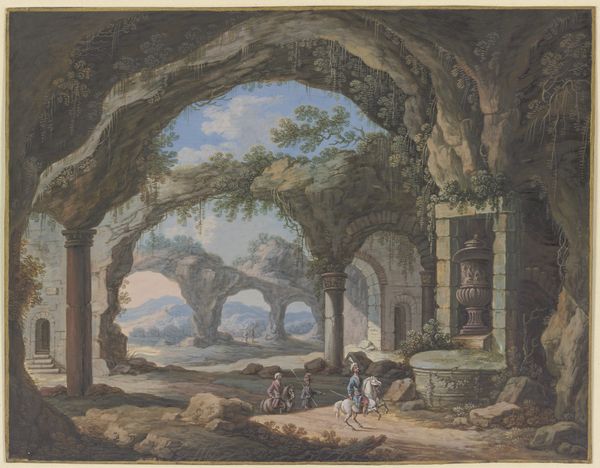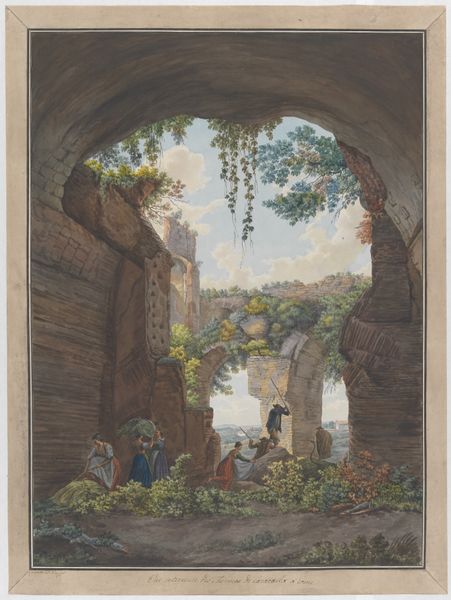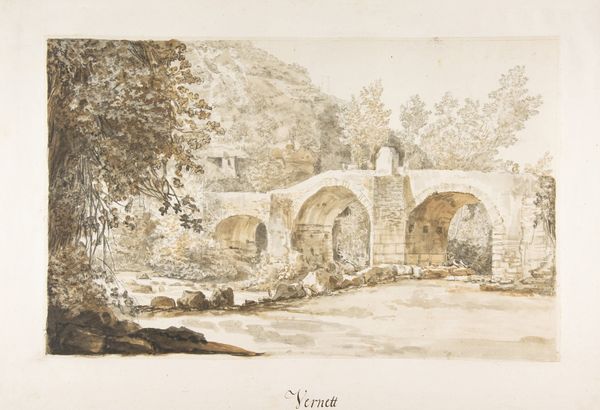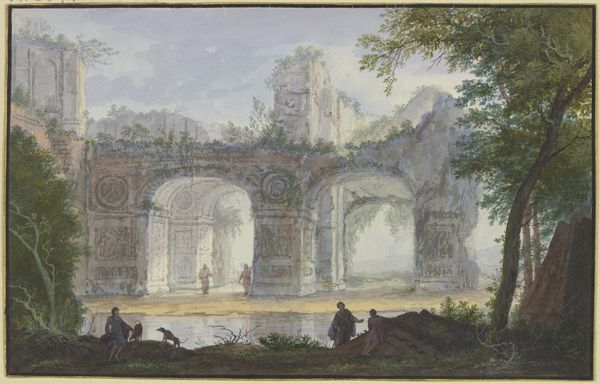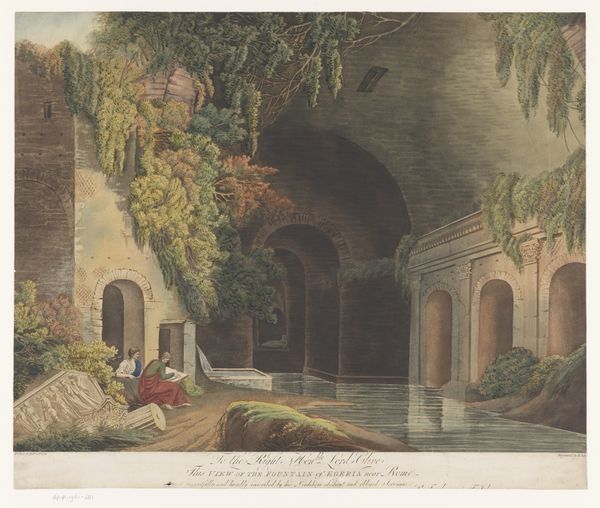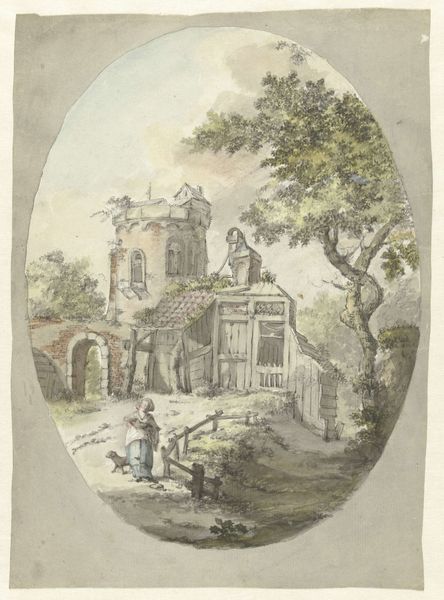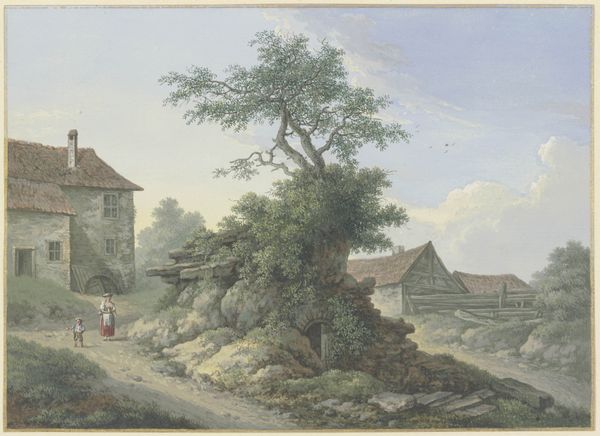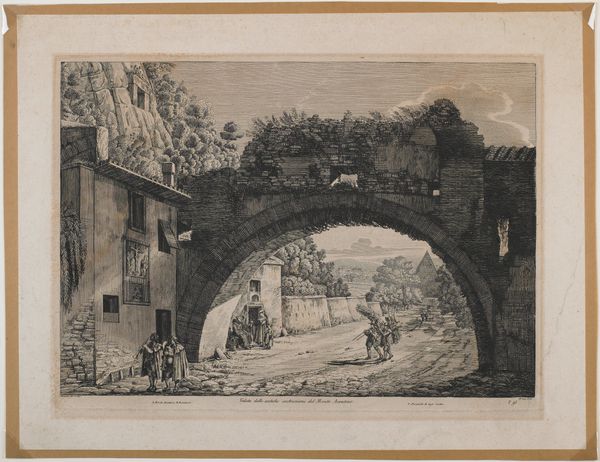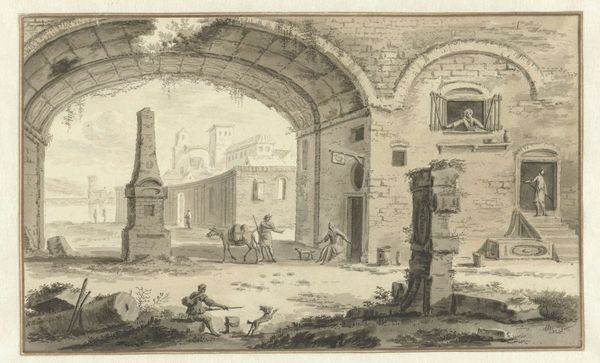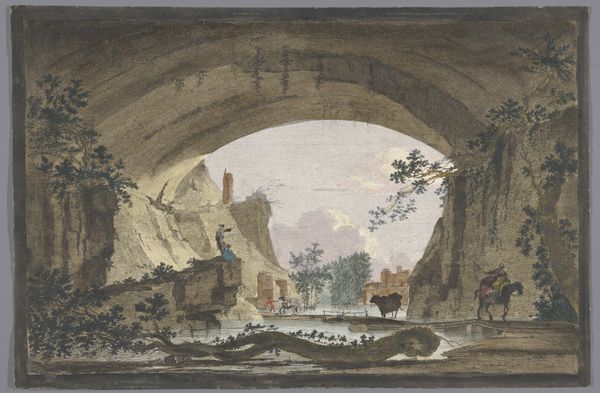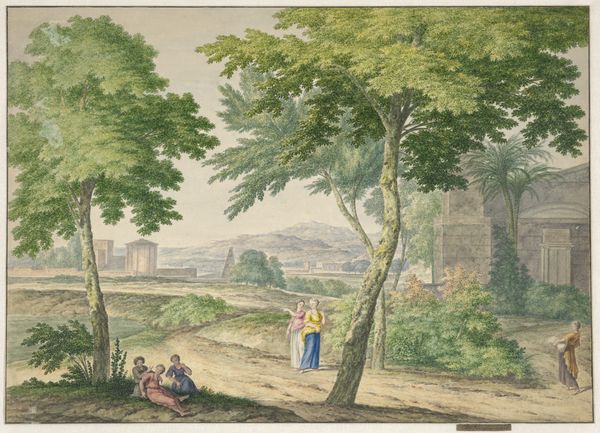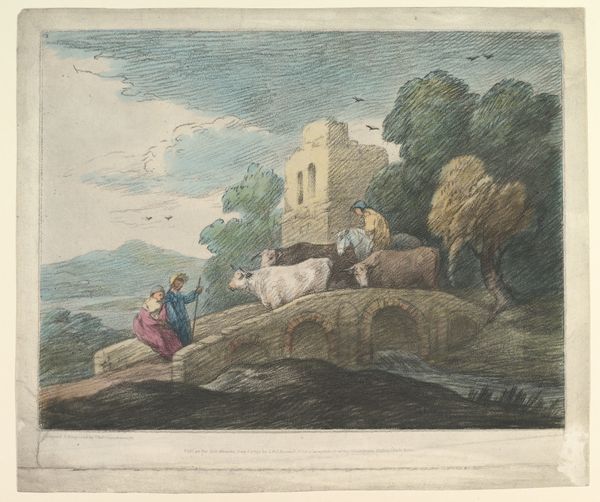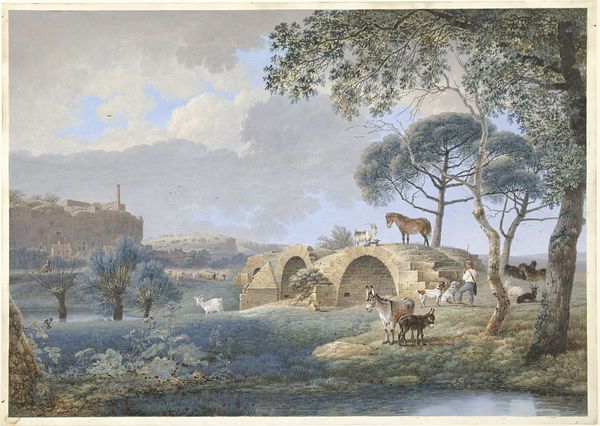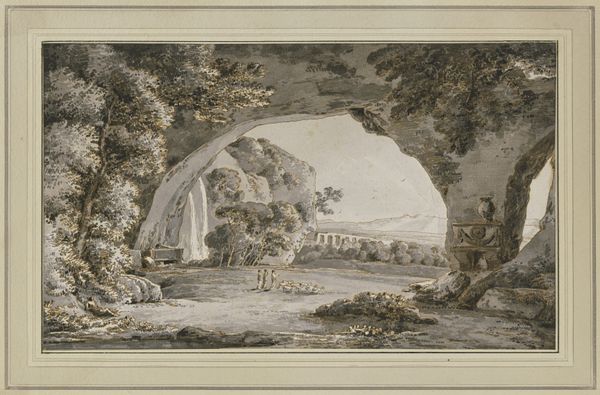
drawing, coloured-pencil, painting, ink, architecture
#
drawing
#
coloured-pencil
#
painting
#
landscape
#
ink
#
coloured pencil
#
classicism
#
cityscape
#
genre-painting
#
architecture
Copyright: Public Domain
Curator: Hubert Robert's "Vault with Ancient Fountain and View of a Staircase", created around 1780, depicts an imaginative, crumbling architectural space. It’s currently held here at the Städel Museum. Editor: There’s a melancholy about this drawing, don’t you think? The muted colours and the decaying structure suggest a world that’s beautiful, but irrevocably lost. Curator: Absolutely. Robert was deeply interested in the dialogue between past and present, often using ruins to reflect on the transience of power and civilisation, but also pointing to continuities and new evolutions of culture. Here, the scene’s theatricality also suggests a critical lens toward enlightenment narratives of progress. Editor: Tell me more about the technique itself, which contributes to this mood. Notice the wash of sepia ink. See how it defines the deep shadows within the vault and also the delicate hatching used to render the figures. Curator: Those figures seem placed specifically to point out inequalities. Their positioning in relation to the architecture creates a social hierarchy, placing them in subservient roles to both architecture and to those elevated above on the stairs. This arrangement forces us to confront ideas of accessibility, privilege and marginalization. Editor: The composition certainly directs the eye in specific ways. The archway, for example, frames the receding architecture drawing us deeper and deeper. The rhythmic pattern created by the steps lead towards a vanishing point suggestive of grand, unknowable narratives. Curator: It also speaks to larger colonial structures embedded in Europe at that time. Artists like Robert created works not only as aesthetic pleasures but as tools to explore, normalize, and reflect power relations within the colonies and the colonial center. Editor: A tension is established here: the detailed rendering of architectural features, is contrasted against the sketchiness of human figures that lends an immediacy to the scene and avoids idealization. Curator: Indeed, considering Robert's time, we see reflected the emerging ideas about social reform and the inherent inequalities that were being both exposed and debated in salons and political circles, challenging the status quo. Editor: Thank you. A careful balancing act of visual delight and melancholic contemplation, with technique enhancing theme! Curator: It is, and also, in understanding how artistic imagination responds to and refracts the social and political issues, we gain a more layered perspective on the artwork's position.
Comments
No comments
Be the first to comment and join the conversation on the ultimate creative platform.
